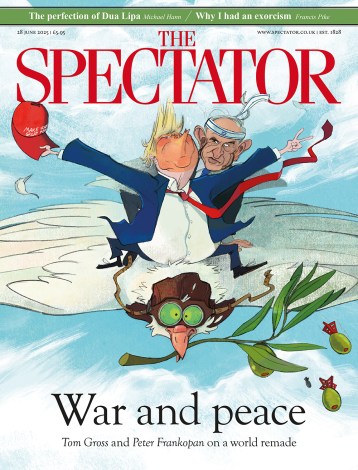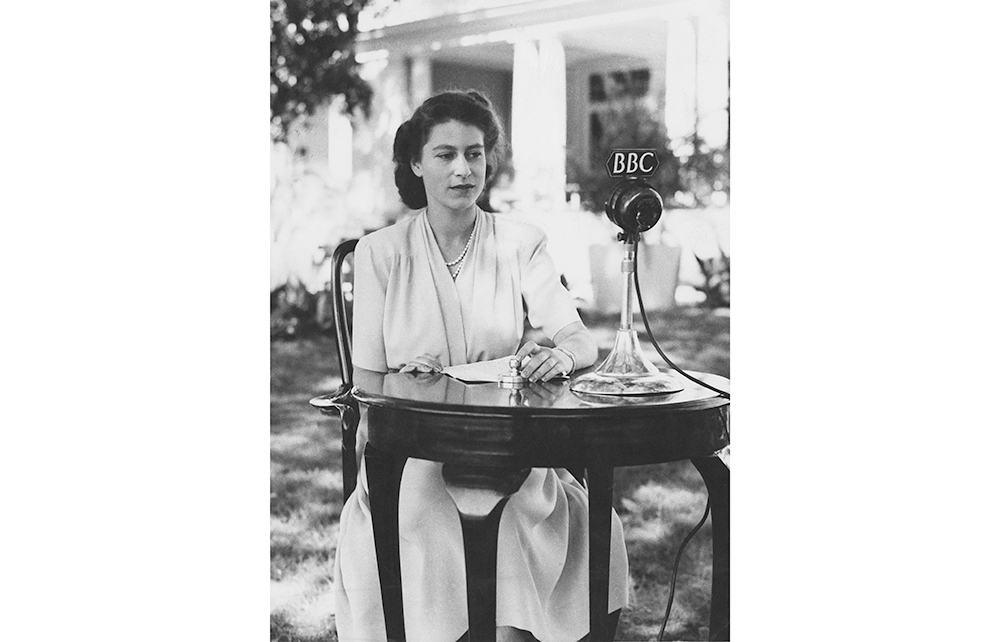It was George VI who first called his extended family ‘the Firm’. Today, with so many injuries and key players on the bench, it might better be known as ‘the Team’ – and one struggling to avoid relegation. It’s what you might call a reign in pain. So it’s a good time for Alexander Larman to publish this appreciative, but not sycophantic, conclusion to his royal trilogy.
Its predecessors were The Crown in Crisis (2020) and The Windsors at War, published last year. The latest volume concerns the period between VE Day in 1945 and the coronation of the late Queen Elizabeth in 1953 when, in Larman’s telling, the royal family successfully rebranded itself after more than a decade of crises, both internal and external.
The rebranding was led by Elizabeth herself, whose ‘whether it be short or long’ radio broadcast of 1947 had 200 million Commonwealth subjects in synchronised floods of tears. Larman makes plain that the young princess was resolute, dignified and intelligent, easily claiming the respect and affection of all who knew her, as well as those hundreds of millions who did not.
Then there was the ailing George VI: gracious, but fragile and timid, ill-equipped for so demanding a role. And, of course, his elder brother the Duke of Windsor, briefly Edward VIII – a man who it was difficult to ignore, but worth making the effort to do so. He had helpmeets hand-cut his loo rolls and serve his pugs dinner on silver salvers. In a Prince Harry-like exile, he was selfish but needy, and ingratiating as well. Everybody just wanted him to go away.
Smaller roles are taken by Joseph Stalin, Tom Driberg, a gay Labour MP attracted to policemen, and Winston Churchill, who, we are told, used to cry a lot. I especially liked Sir Alan ‘Tommy’ Lascelles, George VI’s private secretary, who actually wrote Elizabeth’s 1947 speech. A masterly courtier, superior, meticulous, imperially moustachioed and unflappable, he described an appalling gale at sea on a royal tour as a ‘bad dusting’.
But the hero of the rebranding was surely the Corfu-born Philip of Schleswig-Holstein-Sonderburg-Glucksburg, who happily became the less polysyllabic Duke of Edinburgh. This was a class act in the matter of personal identity being transformed into national treasure, upstaging even the 1917 rebrand of Saxe-Coburg-Gotha to ‘Windsor’. This was a device to counter anti-German sentiment in the Kaiser’s war when Gotha G.V. aircraft of the Luftstreitkraefte dropped explosive, rather than reputational, bombs on London.
You have to be well in your eighties to remember a period before Philip or, indeed, Elizabeth. Certainly, I grew up assuming that there had always been someone like Philip present in the royal family – steadfast, attentive, but not at all subservient. And if his occasional golliwogs-and-chinks asides were wince-making, there was compensation in his immaculate dress sense, which surely added to national prestige when presented on the world stage. Philip also later did genuine good works with his awards scheme and his patronage of the Design Council. So it is gruesome to learn that courtiers first considered him ‘rough and uneducated’.
The great achievement of the recent Elizabethan era was that the royal family presented, at least for a while, a comforting image of rectitude and decency, good manners and all that grace-under-pressure stuff. In fact, lessons in tact. It was said of Queen Victoria’s husband Prince Albert that he had a lot of taste, and all of it was bad. But Elizabeth transcended that. When Nicky Haslam once questioned her about taste, the reply came: ‘I don’t think it helps.’ That’s both witty and insightful. But while the late Queen showed little interest in ‘culture’, her career was performance art at its best. Because her influence on the nation’s mood was esoteric does not mean it lacked profundity.
The years between VE Day and the coronation were mixed for Britain: there might have been power and glory, but there was austerity and uncertainty too. The epochal Land Rover was launched in 1948, later becoming Elizabeth’s favourite vehicle. Then in 1950 there was the national humiliation of the BRM Grand Prix car being an oversold expensive calamity. It was demonstrated to Elizabeth and Philip at Silverstone, but was inclined to explode and failed dismally. A symbol, if you like.
The following year, the Festival of Britain put the Far Tottering and Oyster Creek Railway in Battersea Park to raise public spirits – but not by much. In 1952, the Bristol Britannia, one of the great airplanes of the period, had its first flight. Two years after the coronation, ITV broadcast the first television commercial (for Gibbs SR toothpaste).
Philip was fully alive to the possibilities of the age. In 1949 he was given a grant of £50,000 to renovate nearly derelict Clarence House. He specified a basement cinema, electric trouser presses and a robot in his wardrobe which jerkily selected the costume du jour for the dapper duke. The project went over budget. Larman’s description of it reminds me of Stirling Moss’s gadget-rich Mayfair bachelor pad, also a herald of the zeitgeist.
Never actually knowing quite what Queen Elizabeth thought about anything added to the serene detachment which was fundamental to the ‘rebirth of royalty’. There was none of the letting daylight in upon magic which Walter Bagehot so correctly anticipated would undermine royal cred. Thus it is rather shocking to hear that Lord Longford, who took a professional interest in pornography later in life, told Gyles Brandreth that Queen Elizabeth ‘enjoys sex’. This he attributed to her love of riding (which he shared), although I am sorry to say there is no more detail of Longford’s information in this otherwise immaculately sourced account.
The rebirth of royalty was the foundation of something which, for a long while, was substantial and worthwhile. But it is probably correct that Larman has ended his Windsor trilogy in 1953. It was not the end of the beginning for the Windsors, but the beginning of the end.






Comments